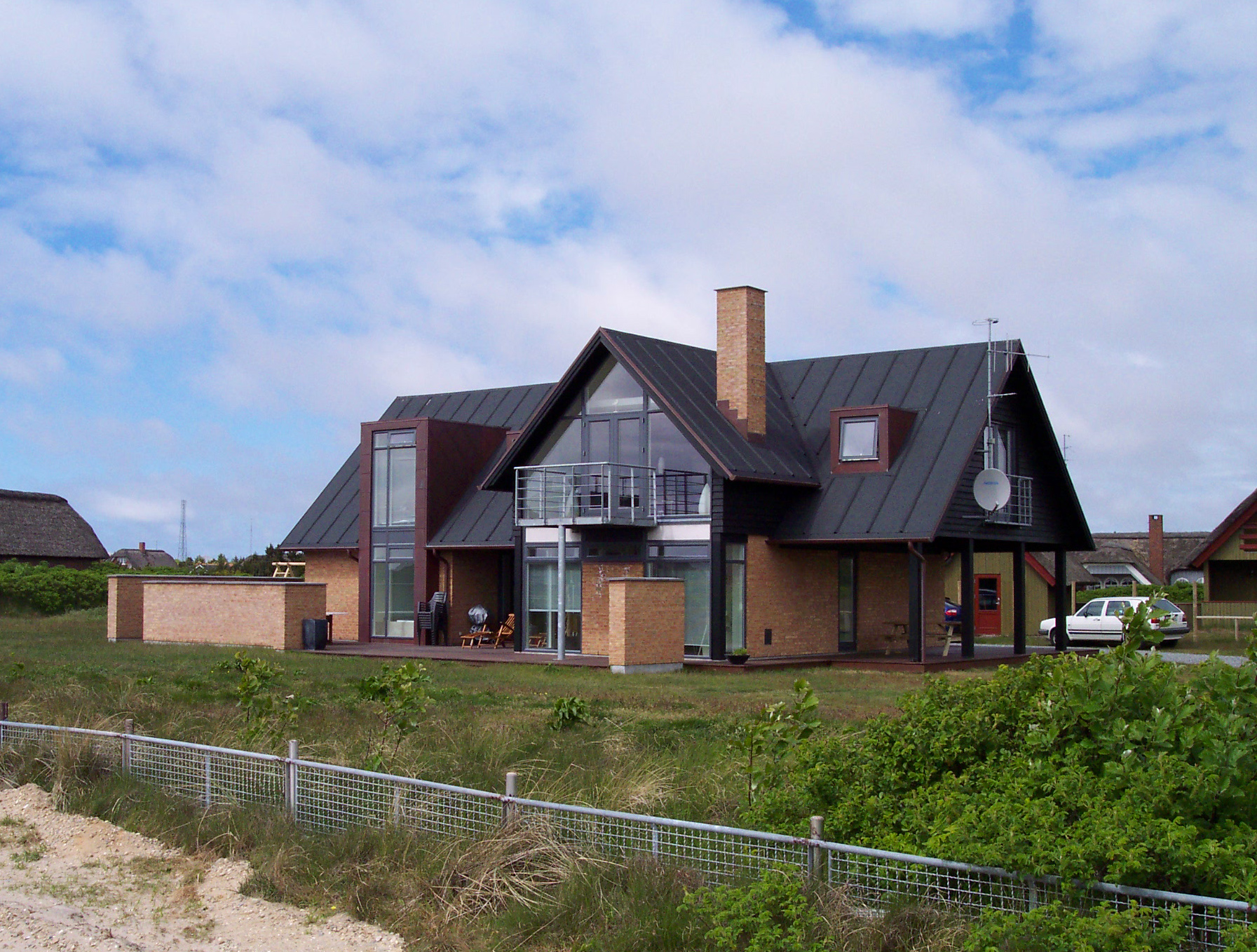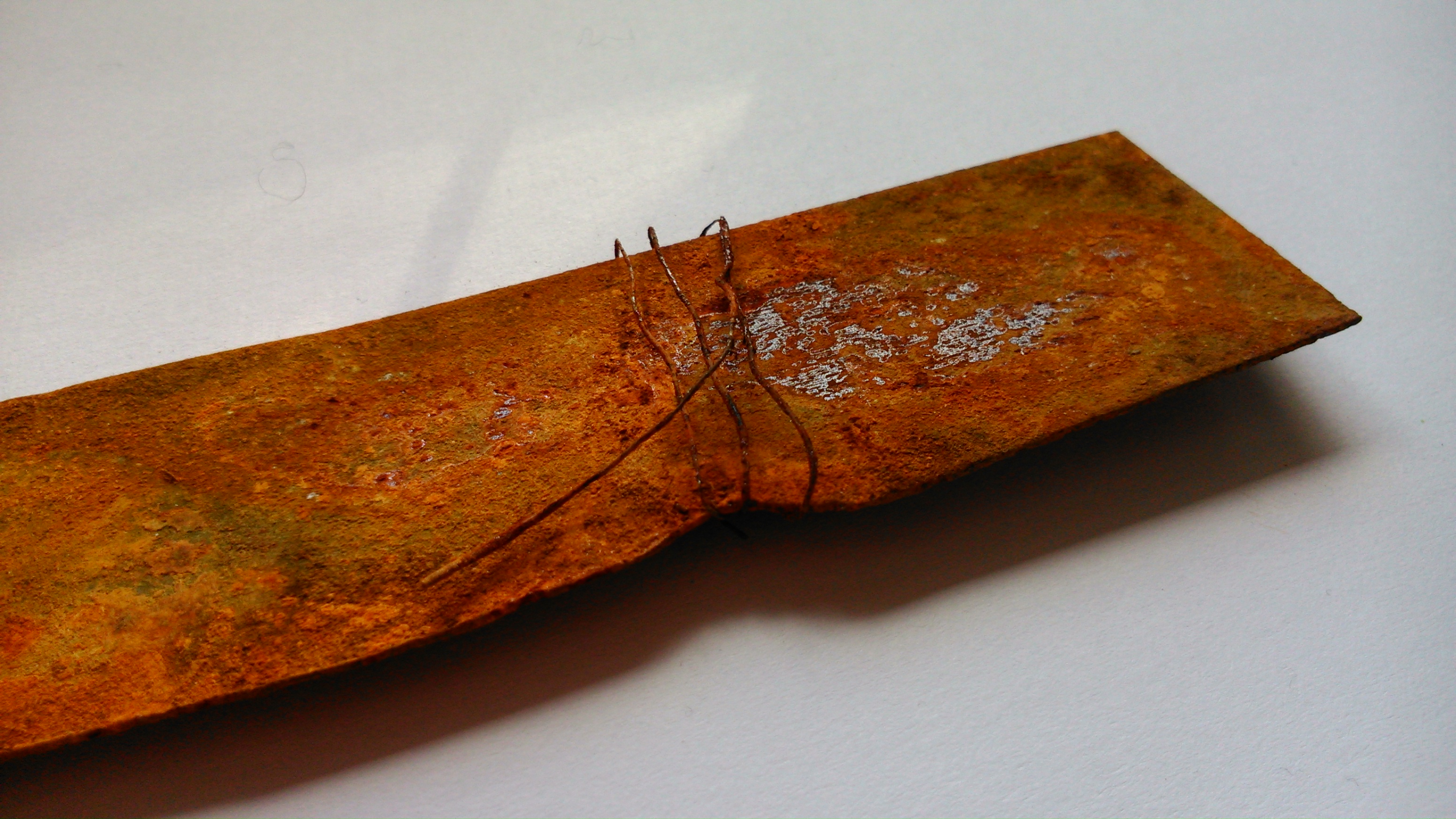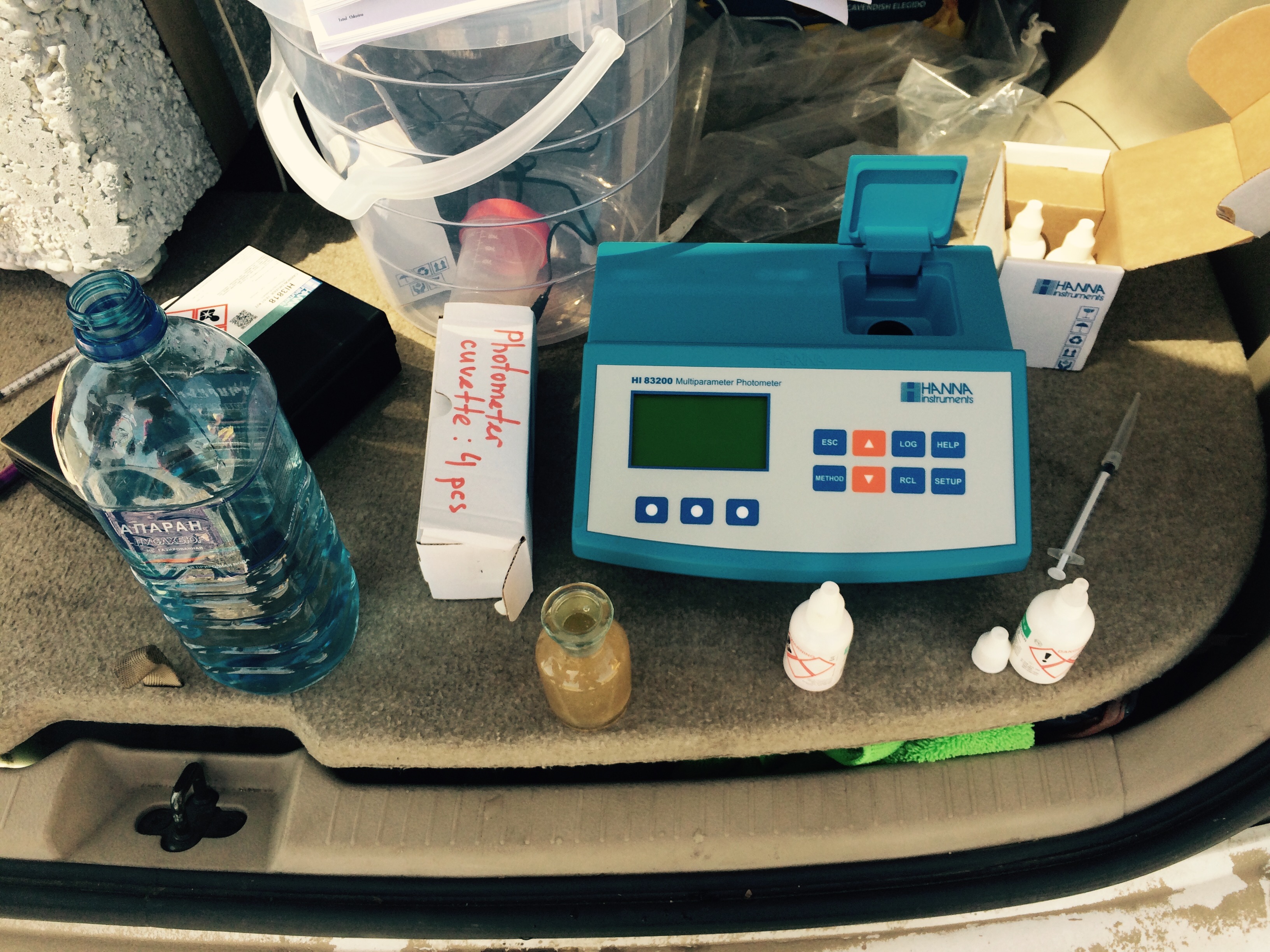|
Rusticle
A rusticle is a formation of rust similar to an icicle or stalactite in appearance that occurs deep underwater when iron-loving bacteria attack and redox, oxidize wrought iron and steel. They may be familiar from underwater photographs of shipwrecks, such as the wreck of the Titanic, RMS ''Titanic'' and the German battleship Bismarck#Wreckage, German battleship ''Bismarck''. They have also been found in the #3 8-inch gun turret on the stern of the USS Indianapolis (CA-35), USS ''Indianapolis''. The word ''rusticle'' is a blend word, portmanteau of the words ''rust'' and ''icicle'' and was coined by Robert Ballard, who first observed them on the wreck of the RMS Titanic, ''Titanic'' in 1986. Rusticles on the ''Titanic'' were first investigated in 1996 by Roy Cullimore, based at the University of Regina in Canada. A previously unknown species of bacteria living inside the ''Titanic''s rusticles called ''Halomonas titanicae'' was discovered in 2010 by Henrietta Mann. Rusticles can fo ... [...More Info...] [...Related Items...] OR: [Wikipedia] [Google] [Baidu] |
Wreck Of The Titanic
The Shipwreck, wreck of British ocean liner Titanic, RMS ''Titanic'' lies at a depth of about , about south-southeast off the coast of Newfoundland (island), Newfoundland. It lies in two main pieces about apart. The bow (ship), bow is still recognisable with many preserved interiors, despite deterioration and damage sustained by hitting the sea floor; in contrast, the stern is heavily damaged. The debris field around the wreck contains hundreds of thousands of items spilled from the ship as she sank. The ''Titanic'' sank in 1912, following Sinking of the Titanic, her collision with an iceberg during her maiden voyage. Numerous expeditions unsuccessfully tried using sonar to map the seabed in the hope of finding the wreckage. In 1985, the wreck was finally located by a joint French–American expedition led by Jean-Louis Michel (oceanographer), Jean-Louis Michel of IFREMER and Robert Ballard of the Woods Hole Oceanographic Institution, originally on a mission to find two n ... [...More Info...] [...Related Items...] OR: [Wikipedia] [Google] [Baidu] |
Halomonas Titanicae
''Halomonas titanicae'' is a gram-negative, halophilic species of bacteria which was isolated in 2010 from rusticles recovered from the wreck of the RMS ''Titanic''. It has been estimated by Henrietta Mann, one of the researchers that first isolated it, that the action of microbes like ''H. titanicae'' may bring about the total deterioration of the ''Titanic'' by 2030. While the bacteria have been identified as a potential danger to oil rigs and other man-made objects in the deep sea, they also have the potential to be used in bioremediation to accelerate the decomposition of shipwrecks littering the ocean floor. Cell morphology ''Halomonas titanicae'' is a gram-negative, rod-shaped bacterium that produces peritrichous flagella. It is catalase and oxidase positive. It has been found to form biofilms and some strains are capable of oxidation of thiosulfate, which is regulated by quorum sensing. It is able to withstand high osmotic pressure due to producing molecules like ect ... [...More Info...] [...Related Items...] OR: [Wikipedia] [Google] [Baidu] |
Iron(III) Oxide
Iron(III) oxide or ferric oxide is the inorganic compound with the formula . It occurs in nature as the mineral hematite, which serves as the primary source of iron for the steel industry. It is also known as red iron oxide, especially when used in pigments. It is one of the three main oxides of iron, the other two being iron(II) oxide (FeO), which is rare; and iron(II,III) oxide (), which also occurs naturally as the mineral magnetite. Iron(III) oxide is often called rust, since rust shares several properties and has a similar composition; however, in chemistry, rust is considered an ill-defined material, described as hydrous ferric oxide. Ferric oxide is readily attacked by even weak acids. It is a weak oxidising agent, most famously when reduced by aluminium in the thermite reaction. Structure can be obtained in various polymorphs. In the primary polymorph, α, iron adopts octahedral coordination geometry. That is, each Fe center is bound to six oxygen ligands. In t ... [...More Info...] [...Related Items...] OR: [Wikipedia] [Google] [Baidu] |
Detached Rusticles Hires
A single-family detached home, also called a single-detached dwelling, single-family residence (SFR) or separate house is a free-standing residential building. It is defined in opposition to a multi-family residential dwelling. Definitions The definition of this type of house may vary between legal jurisdictions or statistical agencies. The definition, however, generally includes two elements: * Single-family (home, house, or dwelling) means that the building is usually occupied by just one household or family and consists of just one dwelling unit or suite. In some jurisdictions, allowances are made for basement suites or accessory dwelling units without changing the description from "single-family". It does exclude, however, any short-term accommodation (hotel, motels, inns), large-scale rental accommodation ( rooming or boarding houses, apartments), or condominia. * Detached (house, home, or dwelling) means that the building does not share walls with other houses ... [...More Info...] [...Related Items...] OR: [Wikipedia] [Google] [Baidu] |
University Of Regina
The University of Regina is a public university located in Regina, Saskatchewan, Canada. Founded in 1911 as a private denominational high school of the Methodist Church of Canada, it began an association with the University of Saskatchewan as a junior college in 1925, and was disaffiliated by the Church and fully ceded to the university in 1934; in 1961 it attained degree-granting status as the Regina Campus of the University of Saskatchewan. It became an autonomous university in 1974. The University of Regina has an enrolment of over 15,000 full and part-time students. The university's student newspaper, ''The Carillon (Regina), The Carillon'', is a member of Canadian University Press, CUP. The University of Regina is a research university reputed for having a focus on experiential learning and offers internships, professional placements and practicums in addition to cooperative education placements in 41 programs. In 2009 the University of Regina launched the UR Guarantee Progra ... [...More Info...] [...Related Items...] OR: [Wikipedia] [Google] [Baidu] |
Tree
In botany, a tree is a perennial plant with an elongated stem, or trunk, usually supporting branches and leaves. In some usages, the definition of a tree may be narrower, e.g., including only woody plants with secondary growth, only plants that are usable as lumber, or only plants above a specified height. But wider definitions include taller palms, tree ferns, bananas, and bamboos. Trees are not a monophyletic taxonomic group but consist of a wide variety of plant species that have independently evolved a trunk and branches as a way to tower above other plants to compete for sunlight. The majority of tree species are angiosperms or hardwoods; of the rest, many are gymnosperms or softwoods. Trees tend to be long-lived, some trees reaching several thousand years old. Trees evolved around 400 million years ago, and it is estimated that there are around three trillion mature trees in the world currently. A tree typically has many secondary branches supported cle ... [...More Info...] [...Related Items...] OR: [Wikipedia] [Google] [Baidu] |
Iron Hydroxide
An iron oxide is a chemical compound composed of iron and oxygen. Several iron oxides are recognized. Often they are non-stoichiometric. Ferric oxyhydroxides are a related class of compounds, perhaps the best known of which is rust. Iron oxides and oxyhydroxides are widespread in nature and play an important role in many geological and biological processes. They are used as iron ores, pigments, catalysts, and in thermite, and occur in hemoglobin. Iron oxides are inexpensive and durable pigments in paints, coatings and colored concretes. Colors commonly available are in the " earthy" end of the yellow/orange/red/brown/black range. When used as a food coloring, it has E number E172. Stoichiometries Iron oxides feature as ferrous ( Fe(II)) or ferric ( Fe(III)) or both. They adopt octahedral or tetrahedral coordination geometry. Only a few oxides are significant at the earth's surface, particularly wüstite, magnetite, and hematite. * Oxides of FeII ** FeO: iron(II) oxid ... [...More Info...] [...Related Items...] OR: [Wikipedia] [Google] [Baidu] |
Iron Carbonate
Iron(II) carbonate, or ferrous carbonate, is a chemical compound with formula , that occurs naturally as the mineral siderite. At ordinary ambient temperatures, it is a green-brown ionic solid consisting of iron(II) cations and carbonate anions . The compound crystallizes in the same motif as calcium carbonate. In this motif, the carbonate dianion is nearly planar. Its three oxygen atoms each bind to two Fe(II) centers, such that the Fe has an octahedral coordination geometry. Preparation Ferrous carbonate can be prepared by reacting solution of the two ions, such as iron(II) chloride and sodium carbonate: : + → + 2 Ferrous carbonate can be prepared also from solutions of an iron(II) salt, such as iron(II) perchlorate, with sodium bicarbonate, releasing carbon dioxide: : ()2 + 2 → + 2 + + Sel and others used this reaction (but with instead of ()2) at 0.2 M to prepare amorphous . Care must be taken to exclude oxygen from the solutions, because the ion is e ... [...More Info...] [...Related Items...] OR: [Wikipedia] [Google] [Baidu] |
Iron Oxide
An iron oxide is a chemical compound composed of iron and oxygen. Several iron oxides are recognized. Often they are non-stoichiometric. Ferric oxyhydroxides are a related class of compounds, perhaps the best known of which is rust. Iron oxides and oxyhydroxides are widespread in nature and play an important role in many geological and biological processes. They are used as iron ores, pigments, catalysts, and in thermite, and occur in hemoglobin. Iron oxides are inexpensive and durable pigments in paints, coatings and colored concretes. Colors commonly available are in the " earthy" end of the yellow/orange/red/brown/black range. When used as a food coloring, it has E number E172. Stoichiometries Iron oxides feature as ferrous ( Fe(II)) or ferric ( Fe(III)) or both. They adopt octahedral or tetrahedral coordination geometry. Only a few oxides are significant at the earth's surface, particularly wüstite, magnetite, and hematite. * Oxides of FeII ** FeO: ir ... [...More Info...] [...Related Items...] OR: [Wikipedia] [Google] [Baidu] |
Oxygen Saturation
Oxygen saturation (symbol SO2) is a relative measure of the concentration of oxygen that is Dissolution (chemistry), dissolved or carried in a given medium as a proportion of the maximal concentration that can be dissolved in that medium at the given temperature. It can be measured with a dissolved oxygen probe such as an oxygen sensor or an optode in liquid media, usually water. The standard unit of oxygen saturation is percent (%). Oxygen saturation can be measured regionally and noninvasively. Artery, Arterial oxygen saturation (SaO2) is commonly measured using pulse oximetry. Tissue saturation at peripheral scale can be measured using near-infrared spectroscopy, NIRS. This technique can be applied on both muscle and brain. In medicine In medicine, oxygen saturation refers to ''oxygenation'', or when oxygen molecules () enter the Tissue (biology), tissues of the body. In this case blood is oxygenated in the lungs, where oxygen molecules travel from the air into the blood. O ... [...More Info...] [...Related Items...] OR: [Wikipedia] [Google] [Baidu] |
Bacteria
Bacteria (; : bacterium) are ubiquitous, mostly free-living organisms often consisting of one Cell (biology), biological cell. They constitute a large domain (biology), domain of Prokaryote, prokaryotic microorganisms. Typically a few micrometres in length, bacteria were among the first life forms to appear on Earth, and are present in most of its habitats. Bacteria inhabit the air, soil, water, Hot spring, acidic hot springs, radioactive waste, and the deep biosphere of Earth's crust. Bacteria play a vital role in many stages of the nutrient cycle by recycling nutrients and the nitrogen fixation, fixation of nitrogen from the Earth's atmosphere, atmosphere. The nutrient cycle includes the decomposition of cadaver, dead bodies; bacteria are responsible for the putrefaction stage in this process. In the biological communities surrounding hydrothermal vents and cold seeps, extremophile bacteria provide the nutrients needed to sustain life by converting dissolved compounds, suc ... [...More Info...] [...Related Items...] OR: [Wikipedia] [Google] [Baidu] |
Canada
Canada is a country in North America. Its Provinces and territories of Canada, ten provinces and three territories extend from the Atlantic Ocean to the Pacific Ocean and northward into the Arctic Ocean, making it the world's List of countries and dependencies by area, second-largest country by total area, with the List of countries by length of coastline, world's longest coastline. Its Canada–United States border, border with the United States is the world's longest international land border. The country is characterized by a wide range of both Temperature in Canada, meteorologic and Geography of Canada, geological regions. With Population of Canada, a population of over 41million people, it has widely varying population densities, with the majority residing in List of the largest population centres in Canada, urban areas and large areas of the country being sparsely populated. Canada's capital is Ottawa and List of census metropolitan areas and agglomerations in Canada, ... [...More Info...] [...Related Items...] OR: [Wikipedia] [Google] [Baidu] |








